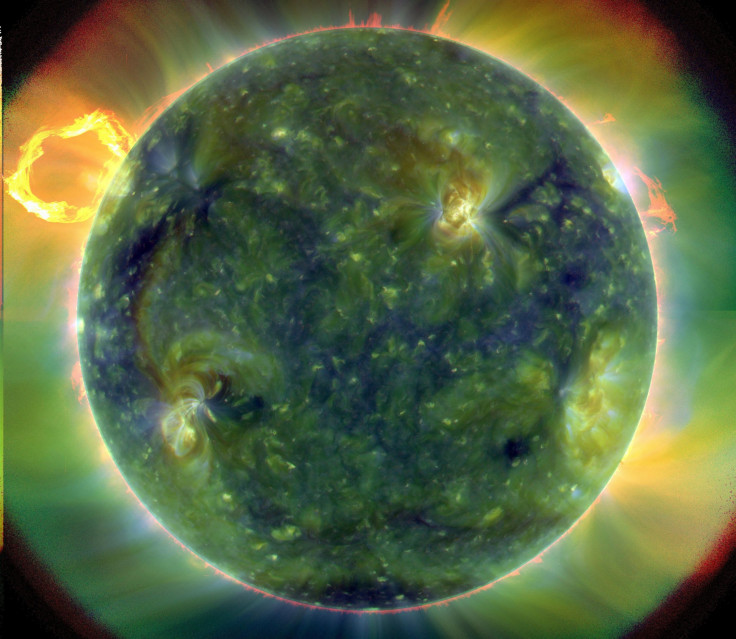Extreme Space Weather Conditions Such As Solar Storms May Cause Satellite Failures

Solar storms, which contain high-speed charged particles ejected from the sun, may be responsible for satellite malfunctions that interrupt television and Internet services on Earth, according to a new study conducted by researchers at the Massachusetts Institute of Technology, or MIT.
According to scientists, geostationary satellites contain sensitive electrons that are packed with layers of protective shielding. But, this protective covering is sometimes damaged by radiation, leading to a satellite’s failure.
“If we can understand how the environment affects these satellites, and we can design to improve the satellites to be more tolerant, then it would be very beneficial not just in cost, but also in efficiency,” Whitney Lohmeyer, a graduate student in MIT’s Department of Aeronautics and Astronautics, said in a statement.
The team of MIT researchers examined space weather conditions, which caused 26 failures in eight geostationary satellites over 16 years of operation by Inmarsat, a London-based company. And, the study found that most of the failures, between 1996 and 2012, occurred at times of high-energy electron activity during declining phases of the solar cycle, during which time the sun's activity fluctuates over an 11-year period.
According to researchers, this flux of charged particles may have accumulated in the satellites over time, which may have eventually caused internal charging, damaging the amplifiers inside the satellites.
“Once you get into a 15-year mission, you may run out of redundant amplifiers,” Lohmeyer said in the statement. “If a company has invested over $200 million in a satellite, they need to be able to assure that it works for that period of time. We really need to improve our method of quantifying and understanding the space environment, so we can better improve design.”
Kerri Cahoy, an assistant professor of aeronautics and astronautics at MIT, suggested that although geostationary satellites are designed with space weather conditions in mind, it may not be enough as space weather could be more dynamic than predicted.
“There are many different ways that charged particles can wreak havoc on your satellite's electronics,” Cahoy said in a statement. “The hard part about satellites is that when something goes wrong, you don't get it back to do analysis and figure out what happened.”
The study, published recently in the journal Space Weather, said that geostationary satellites orbit at the same rate as the Earth's rotation, which helps them remain above the same location throughout their lifetimes. These satellites are designed to last up to 15 years, during which period they may be bombarded by charged particles.
According to Lohmeyer, a better understanding of space weather's effects on satellites is needed not just for current fleets, but also for the next generation of communications satellites.
“Users are starting to demand more capabilities,” Lohmeyer said. “They want to start video-streaming data, they want to communicate faster with higher data rates. So design is changing -- along with susceptibilities to space weather and radiation that didn't used to exist, but are now becoming a problem.”
© Copyright IBTimes 2024. All rights reserved.












